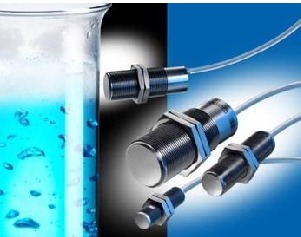This Automation curtain is specially designed for automation industry. SDKELI LSC2 light curtain is designed for automation field, with small size, compact structure and strong anti-interference ability, and the product meets IEC 61496-2 standards. The Automatic Light Curtain is with reliable quality and very competitive price. It has been used in many factories and has replaced curtains from Sick, Omron, Banner, Keyence, etc. Automatic Light Curtain,Laser Light Curtain,Automation Light Beam Sensor,Automatic Infrared Beam Sensor,Infrared Beam Curttain Sensor,Infrared Beam Sensor Jining KeLi Photoelectronic Industrial Co.,Ltd , https://www.sdkelien.com The data shows that by 2020, the number of terminals connected to the Internet of Things will reach 50 billion. There is no doubt that the Internet of Things will become another trillion-level emerging industry in the global information and communication industry. In the areas of smart grids, intelligent transportation, and smart security, China has begun the substantive construction and pilot planning of relevant Internet of Things.
The data shows that by 2020, the number of terminals connected to the Internet of Things will reach 50 billion. There is no doubt that the Internet of Things will become another trillion-level emerging industry in the global information and communication industry. In the areas of smart grids, intelligent transportation, and smart security, China has begun the substantive construction and pilot planning of relevant Internet of Things.
The basic requirement of the Internet of Things is the connection of objects. Every object that needs to be identified and managed needs to have a corresponding sensor installed. Therefore, the upgrading of sensors has become the key to the rapid development of the Internet of Things. With the advancement of Internet of Things technology, it is not only required that sensors have basic information collection and processing functions, but also a high degree of intelligence has become the basic basis for measuring their performance.
The so-called smart sensor, refers to the sensor in addition to the basic functions, with automatic zero, self-calibration, self-calibration function, at the same time with logic judgments and information processing capabilities, can be measured signal signal conditioning or signal processing.
Compared with foreign countries, the research of smart sensors in China mainly focuses on the following aspects:
The first is the use of advanced microelectronics and computer technology to research and develop a monolithic integrated smart sensor that integrates sensors and microprocessors and has various functions. This is one of the major development directions of current smart sensors.
The second is the development of molecular and atomic biosensors based on sensor materials, using biotechnology and nanotechnology, which will lay the foundation for the future development of smart sensors;
The third is to integrate domestic and foreign chip technology, combined with sensitive electronic components, developed a hybrid integrated intelligent sensor, which has higher accuracy, lower cost, and better stability. China has made a major breakthrough in the field of integrated smart sensors, domestic sensors gradually opened up the market share of smart sensors.
The development of smart sensors is mainly divided into three phases, namely digital phase, intelligent compensation and calibration phase, intelligent application and network phase. The sensor that reaches the third stage has many functions such as signal detection and processing, logic judgment, two-way communication, closed-loop control, self-check and self-diagnosis, intelligent correction and compensation, function calculation, and network communication. However, at present, only a small number of domestic manufacturers have reached this stage and they have not been able to achieve widespread adoption.
Another development of the sensor is miniaturization. In automotive electronics and intelligent engineering, traditional sensors have large size and weight, high cost, and limited applications. In this case, micro-sensors have emerged.
Micro sensors not only refer to the small size and light weight of the sensor. In the case of a single sensor, a microsensor is a sensor with a small size. For example, the size of a sensor is from micrometer to millimeter, or even nanometer. The precision sensor, microelectronics, and microelectromechanical system technology are mainly used to realize sensor size. Reduced; for integrated sensors, a microsensor is an integrated sensor that encapsulates tiny sensitive components, signal processors, and data processing devices on a single chip; in the case of sensor systems, microsensors refer to sensing systems. It includes not only micro-sensors, but also micro-actuators, which can work independently, or even consist of multiple micro-sensors, or can implement remote networking.
In terms of market share, microsensors are currently the most successful and most practical microelectromechanical devices. At present, microsensors have accumulated good application experience in automotive applications and employee efficiency. Secondly, because of its advantages of small size, new functions, ease of mass production, and low cost per unit, micro-sensors have bright market prospects in the future.